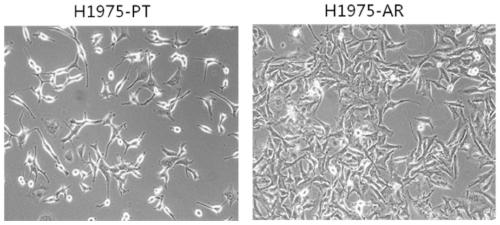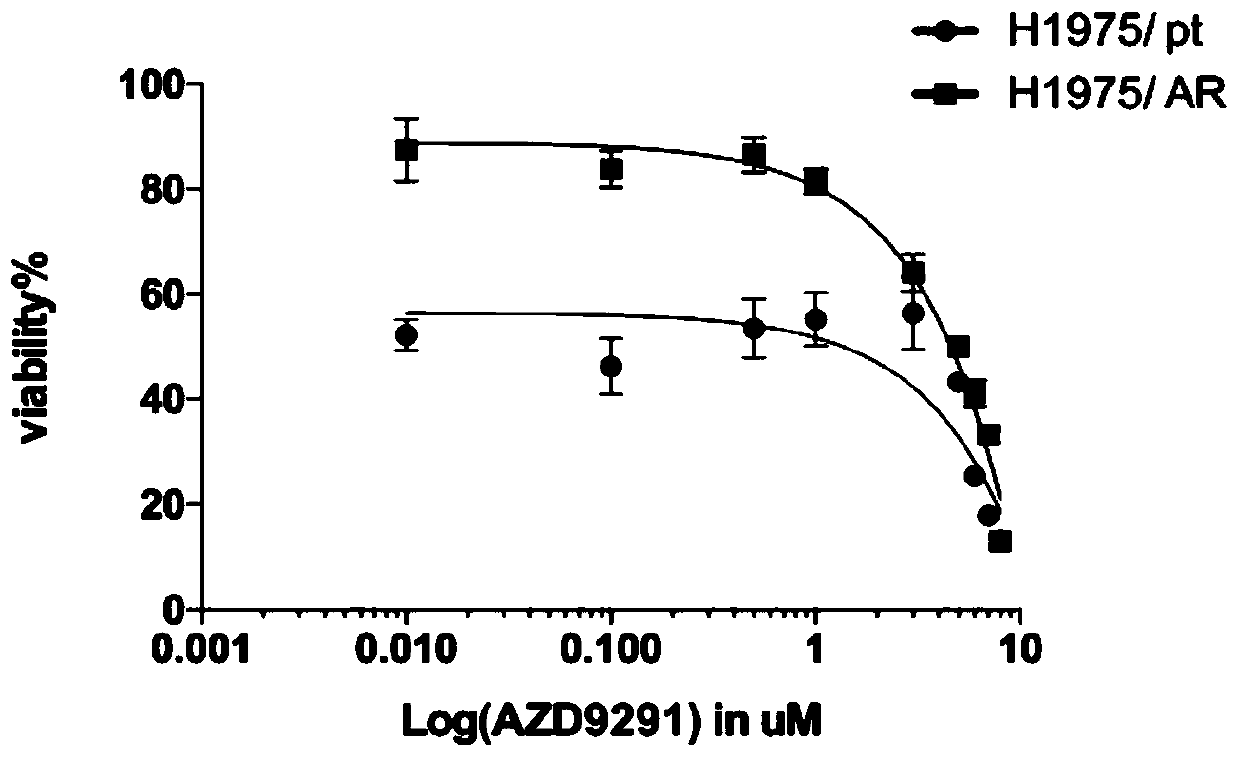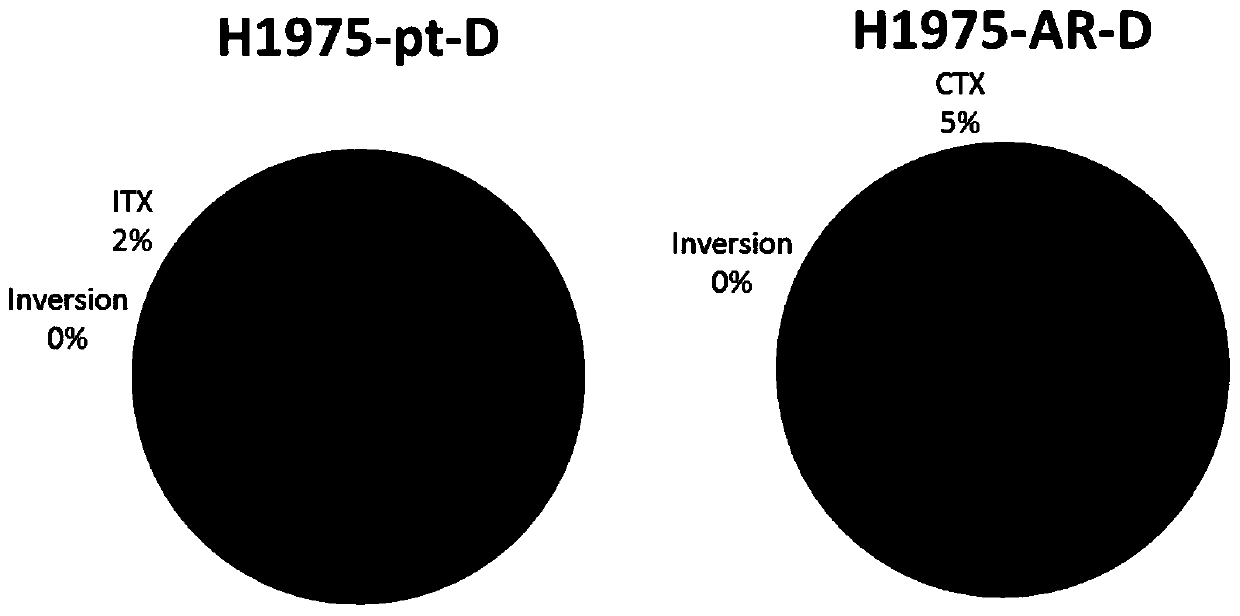Osimertinib drug-resistant cell line NCI-H1975/AR and application thereof
A technology of NCI-H1975 and drug-resistant cells, which is applied in the field of biomedicine to achieve an important role and a good application prospect.
- Summary
- Abstract
- Description
- Claims
- Application Information
AI Technical Summary
Problems solved by technology
Method used
Image
Examples
Embodiment 1
[0021] Induction and establishment of embodiment 1 drug-resistant cell line
[0022] Induction construction of drug-resistant human lung adenocarcinoma cell line NCI-H1975 / AR:
[0023] (1) Culture non-small cell lung cancer cells H1975 in a medium containing 10% inactivated fetal bovine serum, 1% double antibody (100 U / ml penicillin, 100 μg / ml streptomycin), and place at 37°C, 5% CO 2 1. Cultivate in an electric heating constant temperature incubator under the condition of 96% humidity;
[0024] (2) The non-small cell lung cancer cells in the logarithmic growth phase were divided into 5×10 5 / mL inoculated in a culture flask, and when cultured to 75% adherence rate, discard the supernatant, add 100nM AZD9291 drug culture solution to continue to act on the cells, passage when the cell growth accounted for 80-90% of the culture dish, and aspirate For the old culture medium, add 2ml PBS to wash once, add an appropriate amount of trypsin-EDTA digestion solution, and then wash wi...
Embodiment 2
[0026] Morphological observation of embodiment 2 drug-resistant cell lines
[0027] 1. Material of test cell line:
[0028] The non-small cell lung cancer drug-resistant cell line constructed in Example 1, that is, the human lung adenocarcinoma drug-resistant cell line NCI-H1975 / AR, and the parental non-small cell lung cancer cell line H1975 / pt.
[0029] 2. Test method:
[0030] The two kinds of cells were seeded in 6-well plates, cultured to the logarithmic growth phase, and the cell morphology was observed under an inverted phase-contrast microscope.
[0031] 3. The test results are as follows: figure 1 shown.
[0032] Under the microscope, both H1975 / pt and H1975 / AR cells showed epithelioid single-layer arrangement and adherent growth. H1975 / pt cells had clear borders, mostly long fusiform and even polygonal, and the growth was loose with gaps; while H1975 / AR after drug resistance The cells became larger in size, with ill-defined borders, gathered and grown in clusters,...
Embodiment 3
[0034] The detection of drug sensitivity and drug resistance of embodiment 3 drug-resistant cell lines
[0035] 1. Material of test cell line:
[0036] The non-small cell lung cancer drug-resistant cell line constructed in Example 1, that is, the human lung adenocarcinoma drug-resistant cell line NCI-H1975 / AR, and the parental non-small cell lung cancer cell line H1975 / pt.
[0037] 2. Test method:
[0038]The logarithmic non-small cell lung cancer drug-resistant cell line H1975 / AR and the parental non-small cell lung cancer cell line H1975 / pt were respectively prepared into cell suspensions with a concentration of 30,000 cells / ml, and seeded in 96-well cell culture plates, each well Add 200 μl of cell suspension (6000 cells); place the 96-well cell culture plate at 37°C, 5% CO 2 , in an incubator with a humidity of 96%, after culturing the cells for 24 hours to adhere to the wall, carefully suck out the old medium, and add 200 μl of prepared drug-containing medium solutions ...
PUM
 Login to View More
Login to View More Abstract
Description
Claims
Application Information
 Login to View More
Login to View More - R&D Engineer
- R&D Manager
- IP Professional
- Industry Leading Data Capabilities
- Powerful AI technology
- Patent DNA Extraction
Browse by: Latest US Patents, China's latest patents, Technical Efficacy Thesaurus, Application Domain, Technology Topic, Popular Technical Reports.
© 2024 PatSnap. All rights reserved.Legal|Privacy policy|Modern Slavery Act Transparency Statement|Sitemap|About US| Contact US: help@patsnap.com










